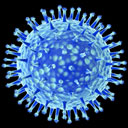
A new killer disease on a par with HIV/Aids or ebola is likely to emerge in the next few years and threaten the lives of millions of people worldwide, the World Health Organisation (WHO) said today.
Potentially deadly new diseases are being identified at an "unprecedented rate", with global epidemics spreading more rapidly than ever, the United Nations agency warned in its annual world health report.
At least one new disease has been identified every year since the 1970s. Today, there are 39 that were unknown just over a generation ago.
The WHO director general, Margaret Chan, said in the report: "Vulnerability is universal. New diseases are emerging at the historically unprecedented rate of one per year."
Governments worldwide must keep watch for new threats like the emergence in 2003 of Sars (severe acute respiratory syndrome), which spread from China to 30 countries and killed 800 people, said the report.
"It would be extremely naive and complacent to assume that there will not be another disease like Aids, another ebola, or another Sars, sooner or later," it said.
The agency said infectious diseases were spreading faster due to global travel, with more than 1,100 epidemics verified in the last five years, including bird flu, cholera and polio.
With more than 2 billion people travelling by air every year, the WHO said "an outbreak or epidemic in one part of the world is only a few hours away from becoming an imminent threat somewhere else".
"Infectious diseases are now spreading geographically much faster than at any time in history."
The report called for stricter monitoring of diseases prone to becoming epidemics, such as cholera and yellow fever.
The agency said that while the H5N1 bird flu virus had not so far mutated into a form that passes easily between humans, the next influenza pandemic was "likely to be of an avian variety" and could affect around 1.5 billion people.
"The question of a pandemic of influenza from this virus or another avian influenza virus is still a matter of when, not if," the report said.
Poorer countries might also need help to identify emerging viral diseases such as ebola and Marburg haemorrhagic fever, both of which cause severe and fatal bleeding, in order to contain outbreaks, it said.
The WHO warned that global efforts to control infectious diseases had been "seriously jeopardised" by the rise in drug-resistant strains of diseases, which it blamed on poor medical treatment and misuse of antibiotics.
This problem threatened the global fight against tuberculosis, with outbreaks of extensively drug-resistant (XDR-TB) strains of the disease identified across the globe.
"Drug resistance is also evident in diarrhoeal diseases, hospital-acquired infections, malaria, meningitis, respiratory tract infections, and sexually transmitted infections, and is emerging in HIV," the report said.

